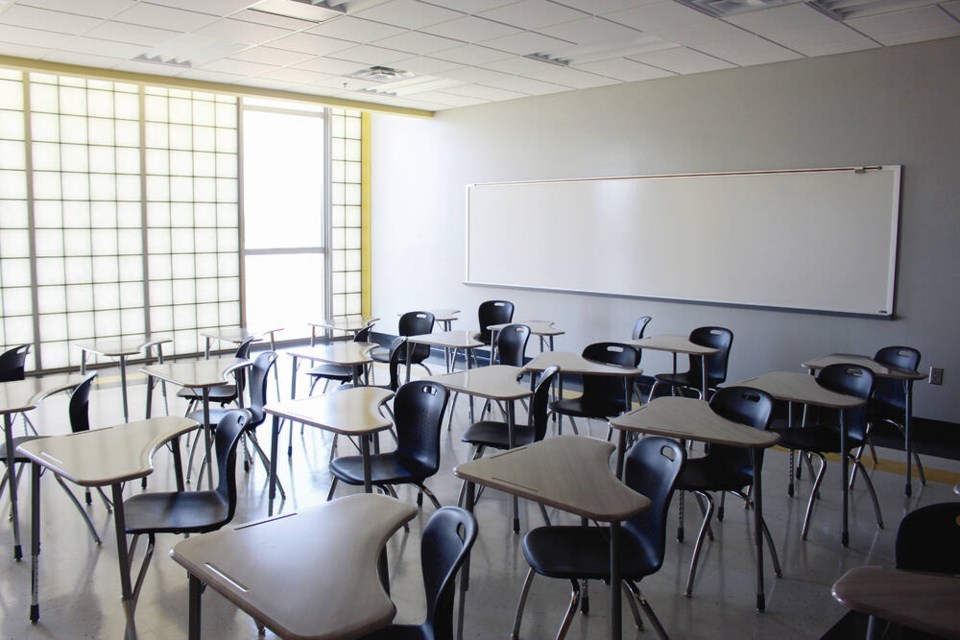There’s no question that the recently released 2023 B.C. Adolescent Health Survey administered by the McCreary Centre Society, a non-government not-for-profit committed to improving the health of B.C. youth, is an incredibly detailed and potentially useful piece of research.
What else can you say about research that involved around 38,500 12-to-19-year-olds in 59 of B.C.’s 60 school districts, and examined the home lives, economic well-being, physical and mental health and well-being, and eating behaviours of these kids.
Around half the students who participated in the survey did so online, and the remainder completed the survey in paper format, responding to questions about body image, substance use, adverse experiences, school experiences, relationships, recreational activities including gambling, and phone use.
Given the wealth of information, it may seem picky to point out that the report comes up a bit light when it comes to school experiences, given that school is where the kids who were the subject of the research spend a major chunk of their waking hours for 190 days each year.
To my mind, the finding that the kids who responded to the survey apparently feel less positive about all aspects of their school experience and their relationships with school staff compared to youth in the 2018 report is significant.
Some of these decreases represented a continuation of declines in positive views of school since the 2013 report.
Feeling connected to school was generally highest for students in Grade 7, but that feeling decreased in Grades 8 and 9, and then generally remained steady for the higher grades.
Interestingly, Grade 12 students were the most likely to feel school staff treated them fairly, while Grade 9 students were generally the least likely to feel “safe” at school — an aspect of school life the report zeroed in on.
For example, in 2023, 68% of youth usually or always felt safe in school washrooms, down from 86% in 2018. Grade 12 students were generally the most likely to feel safe in less-supervised locations, and Grade 9s were the least likely.
What, to my way of thinking at least, is missing from all this is any analysis about the implications for students’ sense of “safety” and belonging at school, which might include a study of a variety of instructional practices, forms of classroom organization and even school design.
In a paper entitled “Belonging as a Guiding Principle in the Education of Adolescents,” Kelly A. Allen and Terence Bowles of the University of Melbourne propose that “the concept of school connectedness, like belonging for school-aged children, is described using a range of terminology, including school bonding, school climate, notions of territory, school attachment, connectedness, and orientation to school.”
When a team of researchers led by University of Salford professor Peter Barrett analyzed the design of 153 classrooms across 27 elementary schools in the United Kingdom, the researchers took measurements and made observations of seating arrangements, wall decorations, and often-overlooked ambient factors such as lighting, temperature, acoustics and air quality — all inside real classrooms.
Good classrooms should be “designed to make attending school an interesting and pleasurable experience,” the researchers concluded, balancing visual stimulation with comfort and a sense of ownership.
Combined, said Barrett, these classroom design elements could account for as much as for 16 per cent of the variation in students’ academic progress.
Again, this all may seem picky, but as was mentioned in a previous column about an analysis of international assessment results, Geoff Masters, head of the Australian Council for Educational Research, suggested that the values and priorities of today’s 15-year-olds have changed to a point where kids now live in a “more connected, but also more ‘siloed’ world enabled by advances in technology and the growth of social media.”
My point is that when the B.C Adolescent Health Survey found that the kids who responded to the survey in 2023 apparently felt less positive about some aspects of their school experience compared to youth in the 2018 report, the analysis might have gone a step further to identify the factors, both external and internal, that contributed to this decline.
All that aside, there is plenty of good news about students looking to the future.
For example, 85% of Grade 12 students planned to continue their education into post-secondary institutions, compared to 80% of Grade 10 students and 71% of Grade 8 students.
Geoff Johnson is a former superintendent of schools.
>>> To comment on this article, write a letter to the editor: [email protected]




